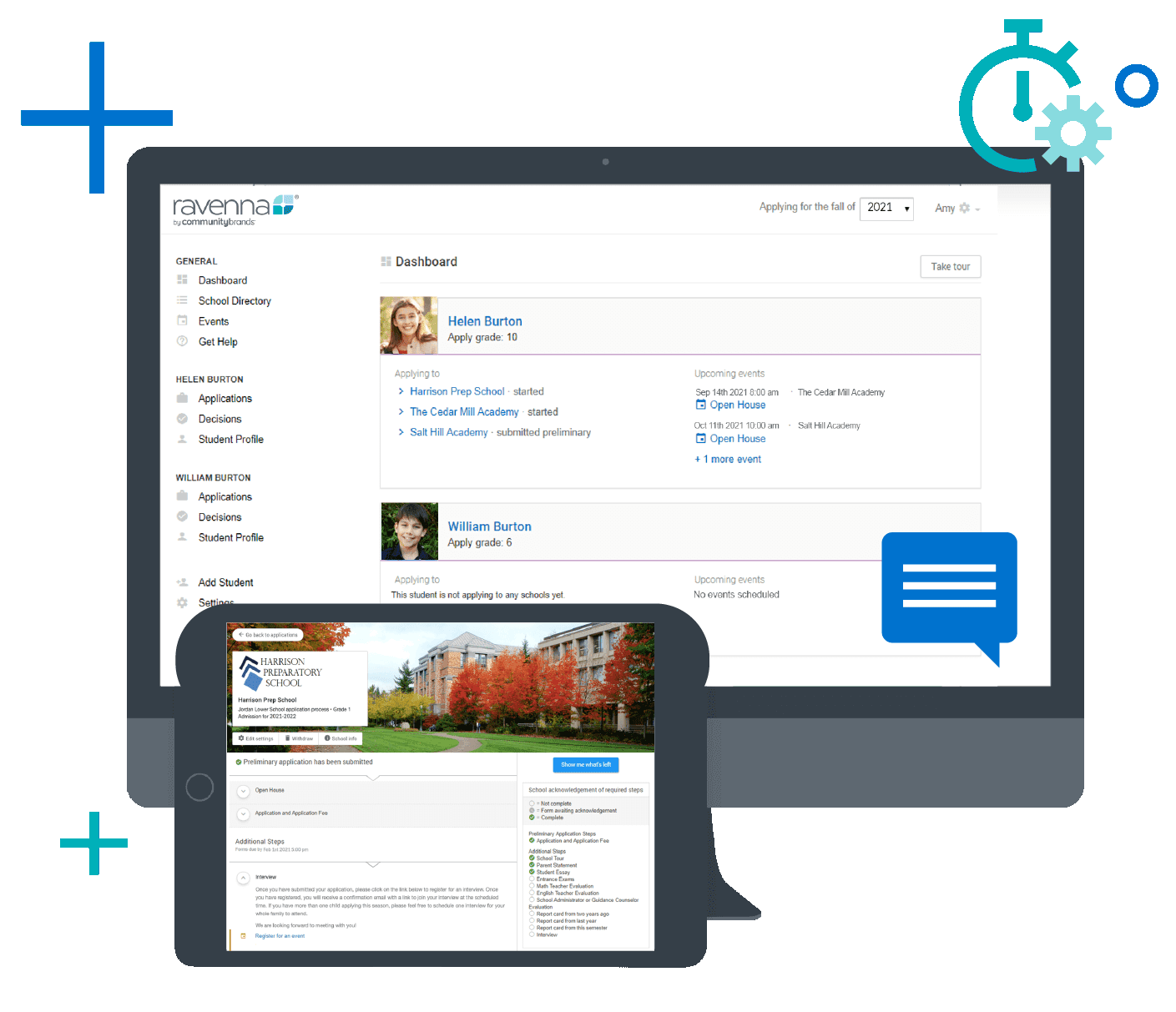Ravenna Online Automated Enrollment System
Automated School Workflows for Enrollment
Get started with a demo
Automation in education is the future of productivity. You have limited time and your admissions office has a large workload. Thankfully, you can boost efficiency with automation rather than increase staff or hours at the office. The Ravenna ADMIT automated enrollment suite will help you get more done with less time and effort.
Ravenna’s automated school Workflows use the data you already input with applications to create a virtually limitless number of processes. These automated tasks can free up your time and productivity so you can focus on building quality relationships with prospects and enrolled families.
Features
Enrollment Automation
Ravenna ADMIT takes care of manual tasks so you can focus on screening and selecting the best applicants for your school. The software has complete customizability that allows you to create the ideal functions to solve the pain points at your school.
For example, Ravenna ADMIT Workflows can transform random applicant forms into custom segmented categories based on any target parameter you choose. Parameters can include factors like application type, extracurricular pursuits, region, grade average, and much more. A Workflow can also assign applications to specific readers based on these criteria.


Marketing Automation for K-12 Private Schools
Ravenna is also a powerful tool for automating communication tasks from internal scheduling to external marketing. These tools can increase the volume of what you get done without compromising the quality of your work.
Ravenna ADMIT can automatically flag student applications and schedule open appointment slots with an interviewer that meets the student’s specific needs. Interviewers can simply adjust their schedules to allow the software to automatically create bookings.
The enrollment suite also has powerful marketing automation to reach families. The software will send automatic email drip campaigns to families. For example, if a family is halfway through the enrollment process, Ravenna ADMIT can send a prewritten email with more information to encourage them to continue applying. The software can send any type of email based on a trigger from the family’s position in the admissions funnel, their potential interest in an online or in-house event, and more.
Ravenna can help you to work smarter with the latest innovations in Workflow automation.
Boost Your Productivity With Automated School Workflows
Want to accomplish more in less time with automated school workflows? The Ravenna software suite is ideal for managing day-to-day processes at K-12 private and independent schools. Ravenna ADMIT transforms your data into actionable admissions automation Workflows that improve the user experience for office staff and applicants.
You can experience the Ravenna difference today with a free demo by signing up online. You can also contact us with any questions about our software so our team can assist you.